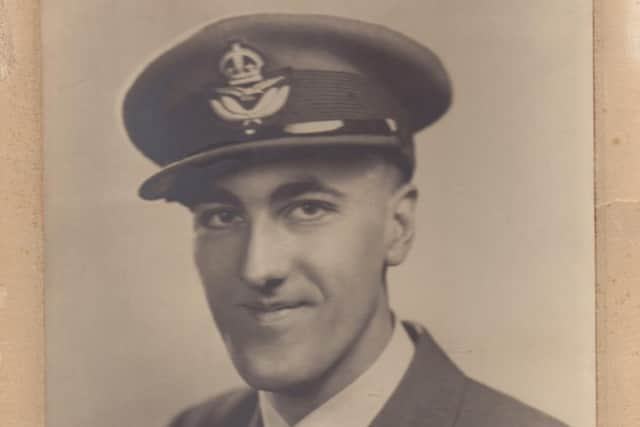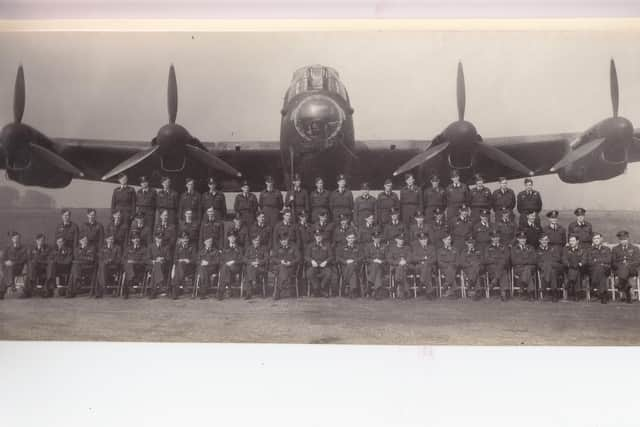Doncaster world war ace’s wartime career will never be forgotten


Peter A F Johnson DFC, from Eastoft, who died in January at the age of 98, joined 101 Squadron on the May 23, 1943 with his crew from 1656 Heavy Conversion Unit RAF Lindholme and began his operational career flying from Holme on Spalding Moor Yorkshire four days later on the night of May 27, 1943 with a trip to Essen. He later visited with others Peenemunde the V1 and V2 Rocket development site, which was a challenging target.
The squadron was then moved from Yorkshire to Lincolnshire to the newly opened base of RAF Ludford Magna on June 15, 1943 and Peter was the first pilot to land a Lancaster from the squadron. 101 remained the only operational bomber squadron to fly from 'Mudford Magna' during WWII.


Advertisement
Hide AdAdvertisement
Hide AdRapidly gaining promotion to W/O Peter and his crew completed a total of 27 operations over occupied western Europe and were tour expired in November 1943 after a final trip to Leipzig on November 20. Peter was commissioned and awarded the DFC announced in the London Gazette on January 21, 1944.
Peter left the squadron to become an instructor training heavy bomber pilots – first from 30 OTU RAF Hixon Staffs and then ultimately from 1667 HCU RAF Sandtoft, where he remained until the end of the war.
He remained in close contact with the members of the Brant/Guthrie family of Ludford who looked after crews on their farm during the war and Peter enjoyed many an hour away from the pressures of flying, rabbiting with other aircrew.
A friend of Peter’s, Kevin Wilson, the author of the book Bomber Boys, men of Air and Journeys End, which contains some stories from Peter’s life, read out a moving eulogy at Peter’s funeral service earlier this year.


Advertisement
Hide AdAdvertisement
Hide AdPart of that eulogy is here. He said: “A quiet hero – that was the man we honour in this church today. There was nothing flamboyant or ostentatious about Peter Johnson. No hint of the archetypal RAF pilot portrayed in films and books after the Second World War.
“No eagerness for justifiable recognition of his bravery as night after night he laid his life on the line to save Britain – and the free world – from a terrible evil. It was simply against his nature to even dream of boasting of his days in uniform and he was not the man to speak of glory. Instead his achievements three quarters of a century ago had to be teased out of him, as I well know.
“And now at last it is time to share them with you. Peter’s introduction to combat was swift and untutored. He joined 101 Sqn at Home on Spalding Moor at the end of May, 1943 as Air Marshall Harris’s four-month Battle of the Ruhr to disrupt and destroy German industry was at its height and losses were increasing. It was the practice at the time for a new pilot to be taken on a “second dickey trip” when he joined an operational squadron after training so that he could see for himself, with an experienced skipper, what dangers might be lessened amid the flak and fury of a target when he took his own crew of neophytes. But in those first few hours on 101 Sgt pilot Johnson discovered that unusually the squadron had more aircraft than crews and Lancasters could not be left to stand idle. Peter told me: “I signed in at Holme on the Monday morning and they put me on ops on the Tuesday night. No second-dickey trip, just straight in. I was assigned to B Flight and the commander was away. The deputy was a real press-on type. He gave me an air test and then I was on the op to Dusseldorf. I was excited about it at the time. All my training had been for that…. Things deteriorated.” He said there were many tests in Peter‘s tour, operations to Berlin to the V2 research establishment at Peenemunde. The successful Bomber Command strike in August, 1943 put back the German rocket programme by months. It was known the Nazis were working on a nuclear bomb and rockets were the likely delivery system, so this RAF operation, combined with the Commando raid to destroy the heavy water plant in Norway which the father of Harold Woolgar – here today – had a hand in, were vital in slowing German scientific progress until the war could be won. He described Peter as the last of the wartime flyers with Bomber Command: “It remains for us to pass on to others that gratitude for what they achieved in preserving our freedom and that of future generations.”